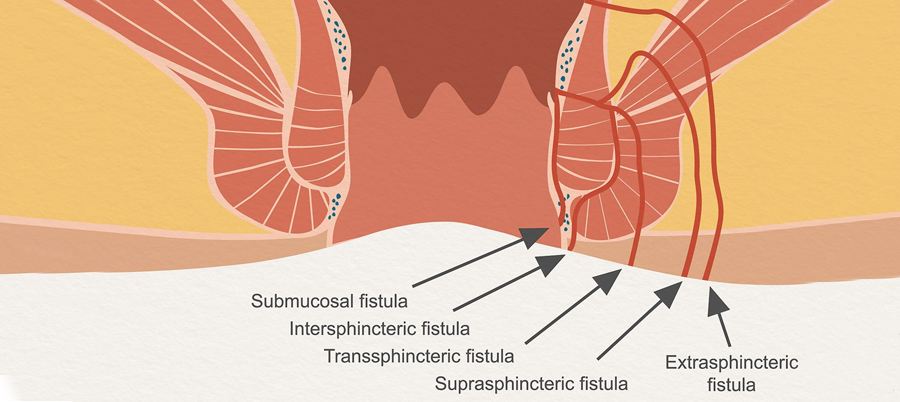An anal fistula is an abnormal tunnel that forms between the anal canal and the skin near the anus. It is often the result of an infection in an anal gland that has developed into an abscess. Here’s a detailed overview of anal fistulas:
Causes and Risk Factors
- Anal Abscess: The most common cause. When an abscess doesn't heal completely, it can form a fistula.
- Crohn's Disease: A type of inflammatory bowel disease that can cause chronic inflammation and the development of fistulas.
- Ulcerative Colitis: Another form of inflammatory bowel disease that increases the risk.
- Trauma: Injury to the anal or rectal area.
- Infections: Tuberculosis, HIV, or sexually transmitted infections can contribute.
- Radiation Therapy: For cancer treatment in the pelvic area.
Symptoms
- Persistent Pain: Pain around the anus, especially when sitting or moving.
- Swelling and Redness: Around the anus.
- Discharge: Pus or blood from an opening near the anus, which can cause skin irritation.
- Fever and Malaise: Indicating an infection.
- Recurrent Abscesses: Frequent abscesses in the same area.
Non-Surgical Treatments
- Antibiotics: To treat any underlying infection, though not a definitive treatment for the fistula itself.
- Fibrin Glue: Injecting a special glue into the fistula tract to close it.
Surgical Treatments
- Fistulotomy: The most common procedure where the fistula tract is cut open to allow it to heal from the inside out.
- Seton Placement: A thin surgical thread is placed in the fistula tract to keep it open and allow it to drain, reducing infection and allowing gradual healing.
- Advancement Flap Procedure: A flap of healthy tissue is moved to cover the internal opening of the fistula.
- LIFT Procedure (Ligation of Intersphincteric Fistula Tract): The fistula tract is tied off and divided.
- Plug: Bioprosthetic plug used to close the fistula tract.
